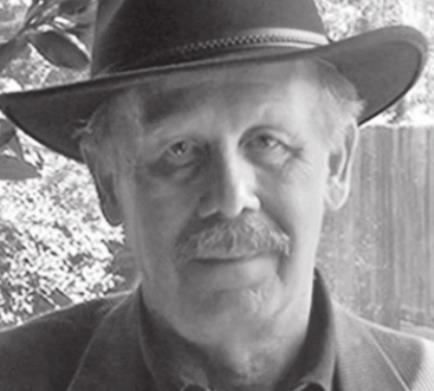Davy Crockett at the Fall of the Alamo,” the third motion picture in a long series, opened at theaters across Texas on Aug. 26, 1926.
The first Alamo movie was made during the early days of silent pictures way back in 1911, eight years after “The Great Train Robbery.” “The Immortal Alamo” was a 15-minute one-reeler and the initial American effort of a famous French filmmaker’s brother.
Gaston Melies deserves credit, at least, for shooting his movie on location, a sulfur springs resort called the Hot Wells Hotel outside San Antonio. Since no copy of “The Immortal Alamo” has survived, only a few still photos, the plot is a mystery.
Nickelodeon patrons had to wait just four years for the second Alamo feature filmed on a backlot in Hollywood. “The Martyrs of the Alamo” was promoted as “The Birth of Texas” because it was a D.W. Griffith production and he wanted the public to think it was the sequel to his recent box-office success “The Birth of a Nation.”
For the first time, the Texas Revolution was portrayed as a race war with heroic whites fighting for their lives against evil brown-skinned Mexicans. In a strange role reversal, Jim Bowie was the well-dressed, aristocratic dandy and William Travis was the sloppy, uncouth frontiersman.
Anthony Xydias was a Greek immigrant, who wound up in Dallas where he opened a movie house in 1906. Twenty years later, he owned a chain of theaters across the Lone Star State and decided to eliminate the middleman by supplying his own pictures.
Xydias did not let the facts get in the way of the story he wanted to tell in “Davy Crockett at the Fall of the Alamo.” Take on example: an impatient Travis gave his line-in-the-sand speech before Santa Anna even arrived in San Antonio. Then the jack-of-all-trades killed Travis off the night before the final battle.
“Davy Crockett at the Fall of the Alamo” easily wins the award for the most depressing ending. The final shot showed dead bodies piled high in front of the Alamo with the words “What Price Mexican Victory?” superimposed on the gruesome scene.
Xydias came out of retirement in 1936 to make the fourth Alamo flick and the first with sound. A terse review summed up this waste of celluloid - “pitifully amateurish.”
Seventeen years went by before Hollywood cranked out another Alamo movie, but “The Man from the Alamo” was not about the 1836 siege at all. Glenn Ford starred as a make-believe character named John Stroud, who refused to cross Travis’ line and left the mission. He was not a coward but a family man worried sick about his wife and kids.
The next Alamo epic was the climax of a television mini-series that aired in 1955. Is there anyone of retirement age who has not seen “Davy Crockett at the Alamo”?
The original version with the on-camera death of Davy, played by Fort Worth’s Fess Parker, was personally vetoed by Walt Disney as too traumatic for the millions of children who would pester their parents into buying them coonskin caps. He had the final scene reshot with Crockett swinging his rifle “Ole Betsy” at a mob of Mexican soldiers.
On the very night most Americans were glued to their tv’s for the finale of the Disney trilogy, the fall of the Alamo was being filmed for the seventh time. “The Last Command,” Republic’s biggest and most expensive motion picture, was shot in and around Bracketville, the same locale used five years later by John Wayne.
Except for J. Carrol Naish, who stole the show with his Santa Anna, the acting was mediocre and the direction terrible. Nonetheless, “The Last Command” was worth the price of admission because of the historical background lacking in most Alamo movies. It began a year and half before the battle and examined Jim Bowie’s tortured, tragic life.
John Wayne’s 1960 “Alamo” had a host of problems. First, Wayne insisted on directing the epic and he was no director. Second, he underestimated how much it would cost and spent precious time away from the set raising money. Third, the casting was terrible. Come on now. British actor Laurence Harvey as Travis?
Fourth, Wayne did not emphasis historical accuracy nearly as much as his fans had the right to expect. Lon Tinkle, the SMU professor and Dallas Morning News columnist who wrote the classic “13 Days to Glory,” was so upset with how the film turned out that he demanded Wayne remove his name from the credits as historical consultant.
And don’t presume Tinkle had anything to do with the 1987 television turkey “The Alamo: 13 Days to Glory.” He was dead and gone, and his wife sold the rights to the title of his book to producer Stockton Briggs, who had no business making an Alamo movie.
The Alamo returned to the big screen that same year with the IMAX spectacular “Alamo...The Price of Freedom.” It was not a traditional movie but a unique and moving theatrical experience. There was never a dry eye in house at the end of the battle scene.
And that brings us to the eleventh and latest in the series, “The Alamo” released in 2004. It is the best of the bunch by far with a script that took very few liberties with the facts and a first-rate cast that breathed life into those Texans of long ago.


